Last Updated on: 24th April 2020, 08:39 pm
Though I’d expected the day to be a short outing, it was clear after an hour on the road that I was in for an adventure. My main objective for the day was to visit the peaceful mountaintop Sapara Monastery – a short drive from Akhaltsikhe’s city center. But my driver also had a couple of other ideas in mind.
I agreed, assuming they were relatively minor churches right by Sapara. And he didn’t divulge any further information. But Chulevi and Zarzma Monasteries turned out to be quite a distance away. Thankfully, both were well worth the drive, and the day turned out to be one of my most memorable excursions in Georgia.
Visiting Sapara Monastery
Located around 11 km east of central Akhaltsikhe, Sapara Monastery is one of the region’s most well-known landmarks. Supposedly, the site has been active from as far back as the 9th century. But the largest of the structures standing today, St. Saba’s Church, was established in the 1200s.
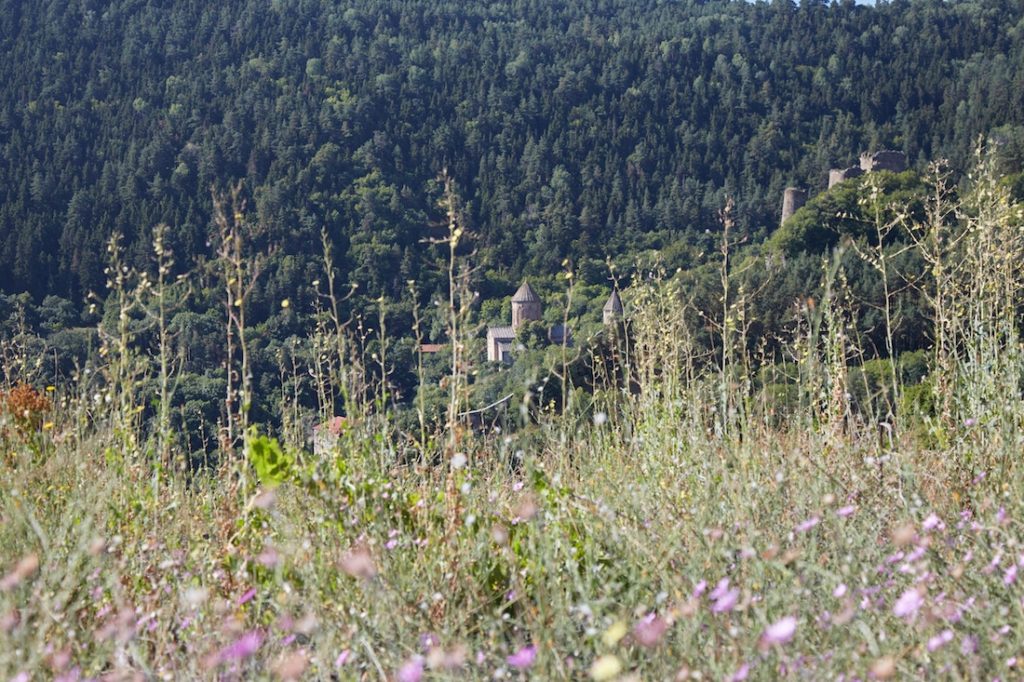

After making our way atop the mountain, but before heading to the church itself, my driver Fedia suggested we get out at a viewpoint. From here, not only could we get a great view of the monastery in the distance, but also the city in the other direction. The cool breeze which flowed through the air was more than welcome on such a hot day.

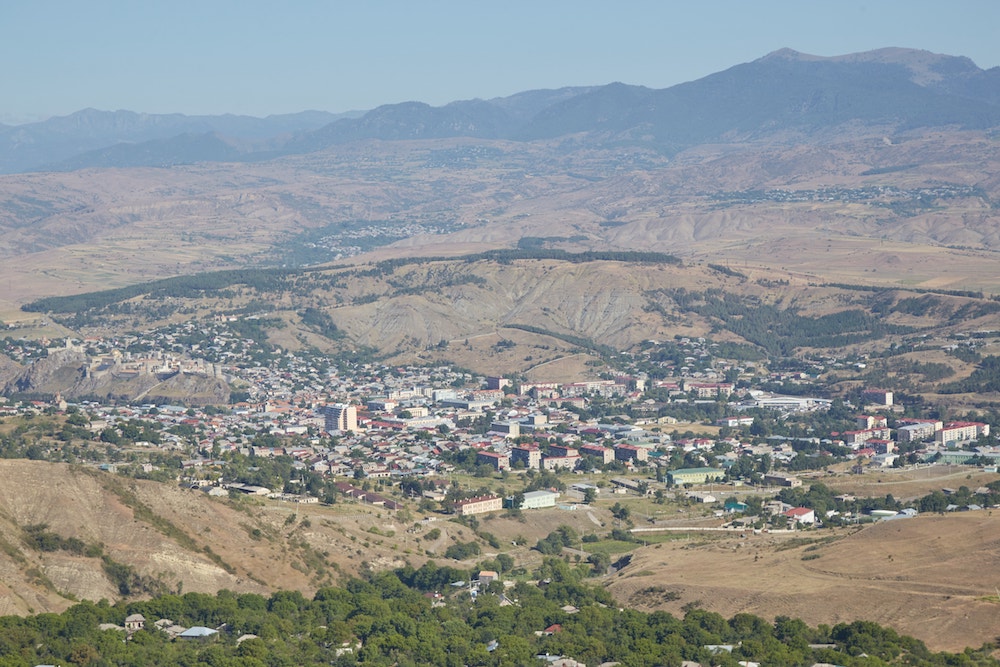

When the Ottoman Empire took over the Akhaltsikhe area in the 1500s, they shut down most of the area’s churches. But not Sapara. According to legend, the monastery’s secluded location meant that the occupiers were totally oblivious to its existence. As such, it was able to function for a long time in secret, and it remains remarkably well-preserved today.

Nowadays, the monastery is pretty well-known. But despite having read a suggestion online to avoid the weekend crowds, I was virtually the only visitor during my Saturday morning visit.
St. Saba’s church was constructed in the typical crucifixion layout so common in Georgia. Before stepping inside, we went to check out some of the intricate carvings adorning the arches in front of the entrance.
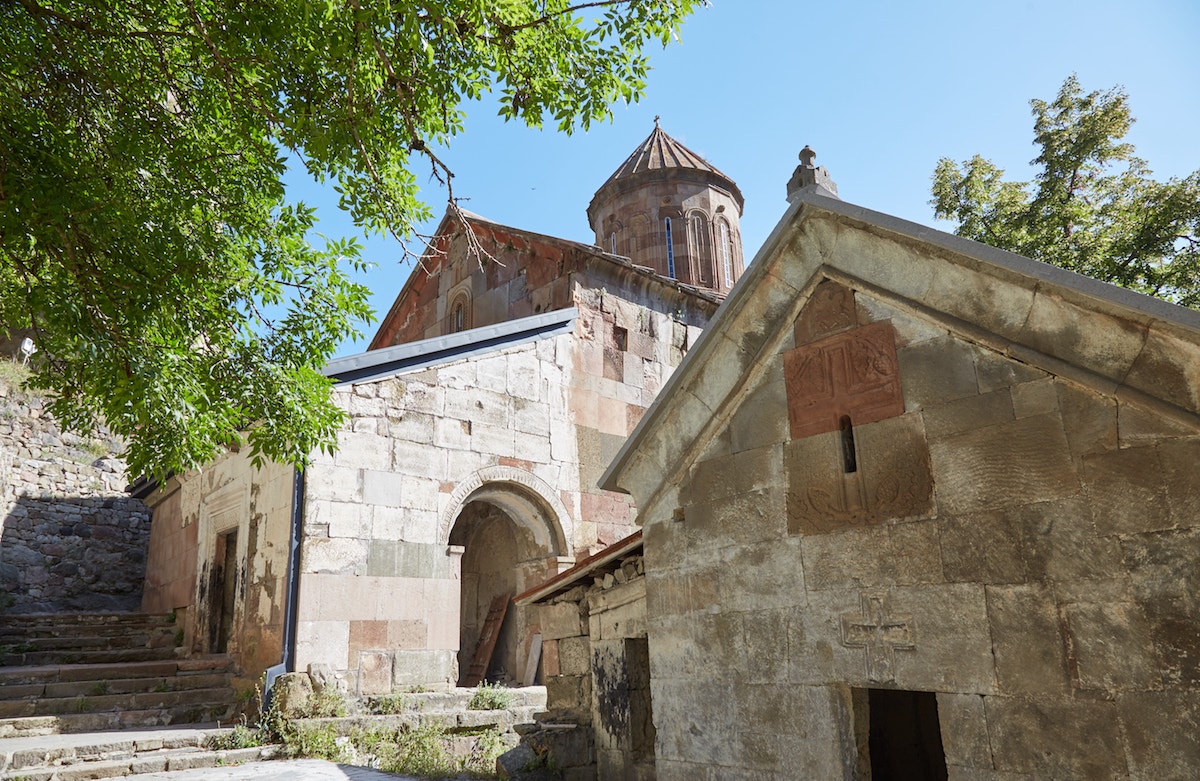
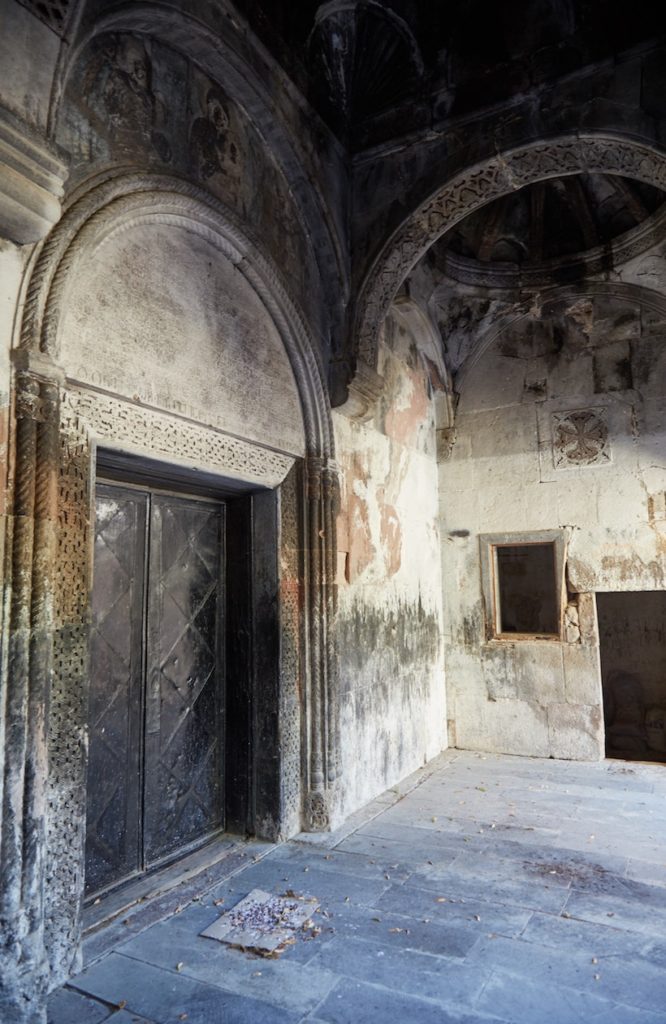
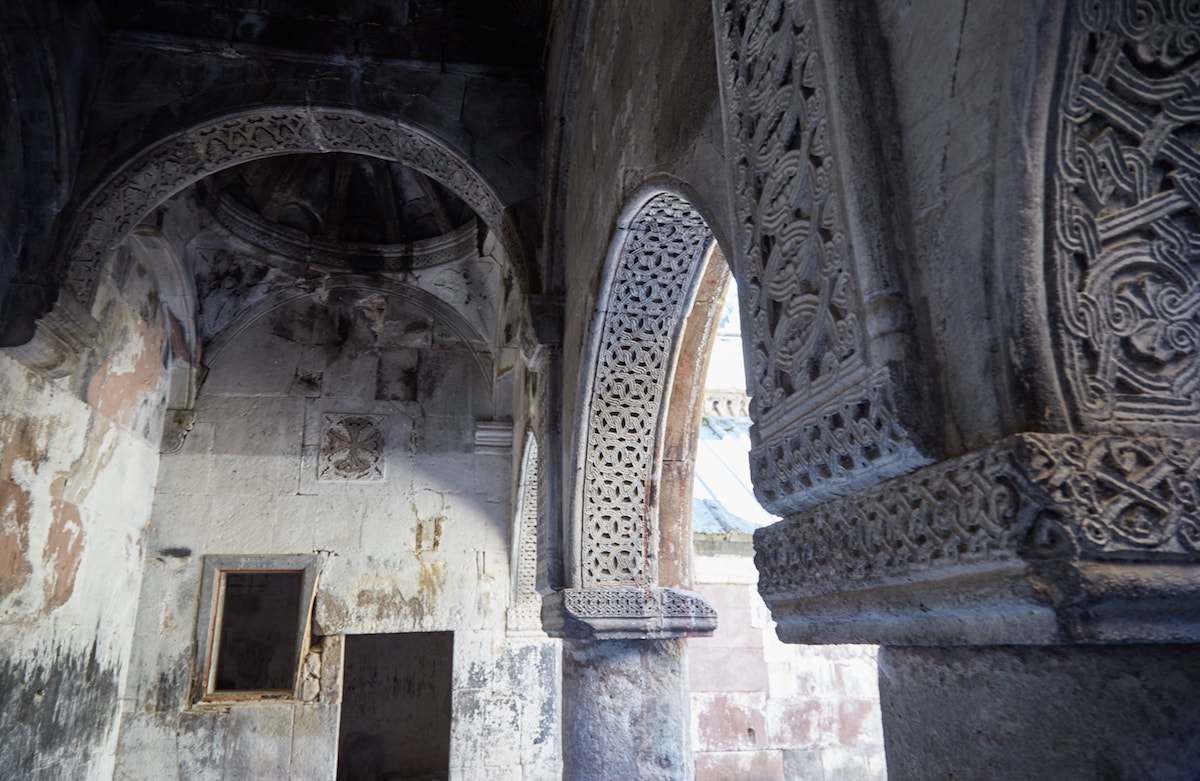

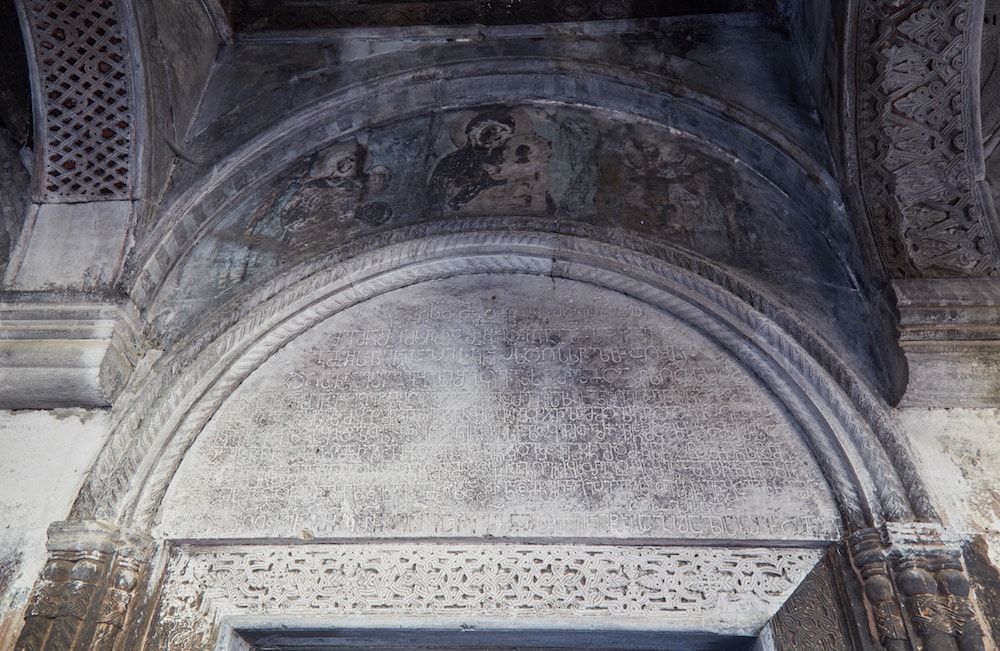
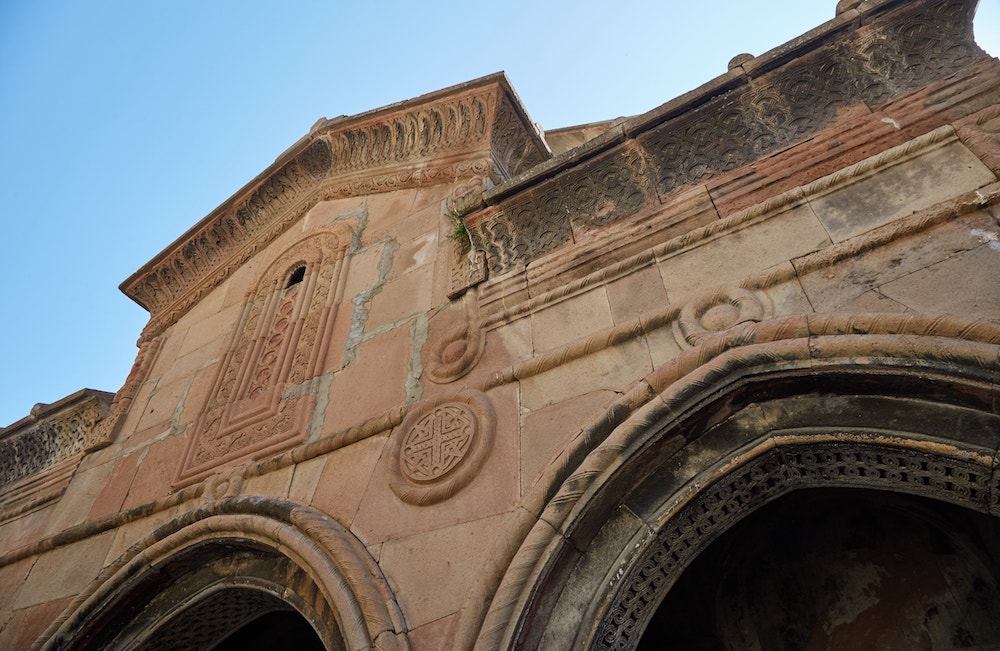
While the Ottomans didn’t manage to find Sapara Monastery, the Soviets did. Fortunately, however, unlike with so many other churches in Georgia, they didn’t whitewash the interior. The frescoes, which date back to the 14th century, remain in great condition.
While I don’t think there’s a rule prohibiting photography inside the church, and I typically take photos inside of other churches, here I decided not to. The atmosphere was especially quiet and solemn, and there were just a few visitors, all of whom were entranced in prayer. It was clear that they’d come a long way up the mountain for something in particular, and I didn’t want to disturb the peace.
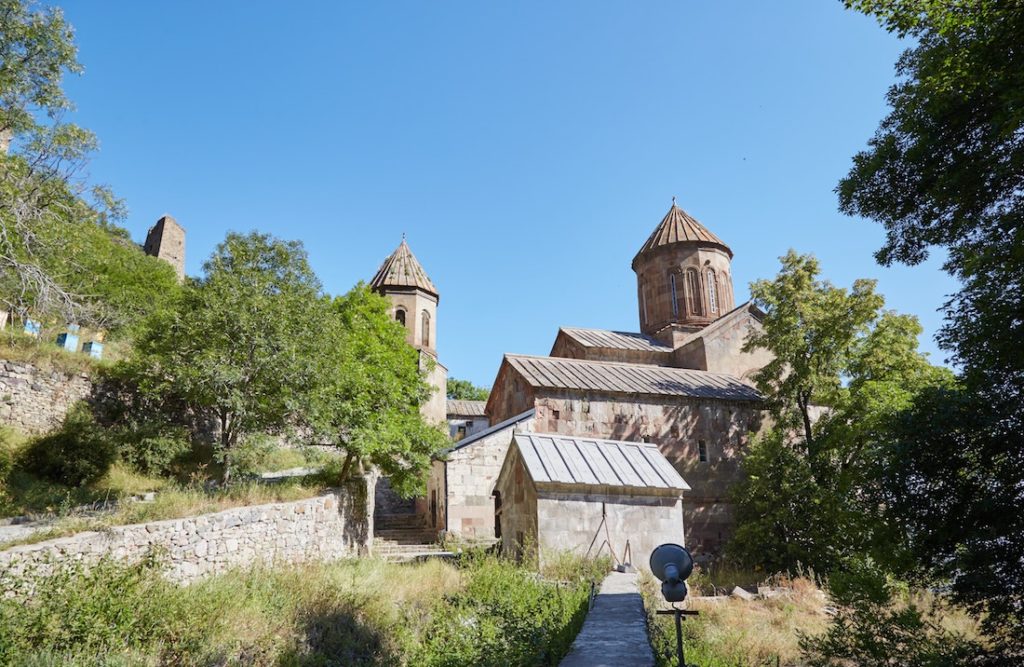

Before entering the church, I’d noticed an old defensive tower further up on the hill above the monastery. After exiting, I asked my driver to wait for me, and I found a steep dirt path to take me there. Reaching it requires a several-minute hike through a dense forest.
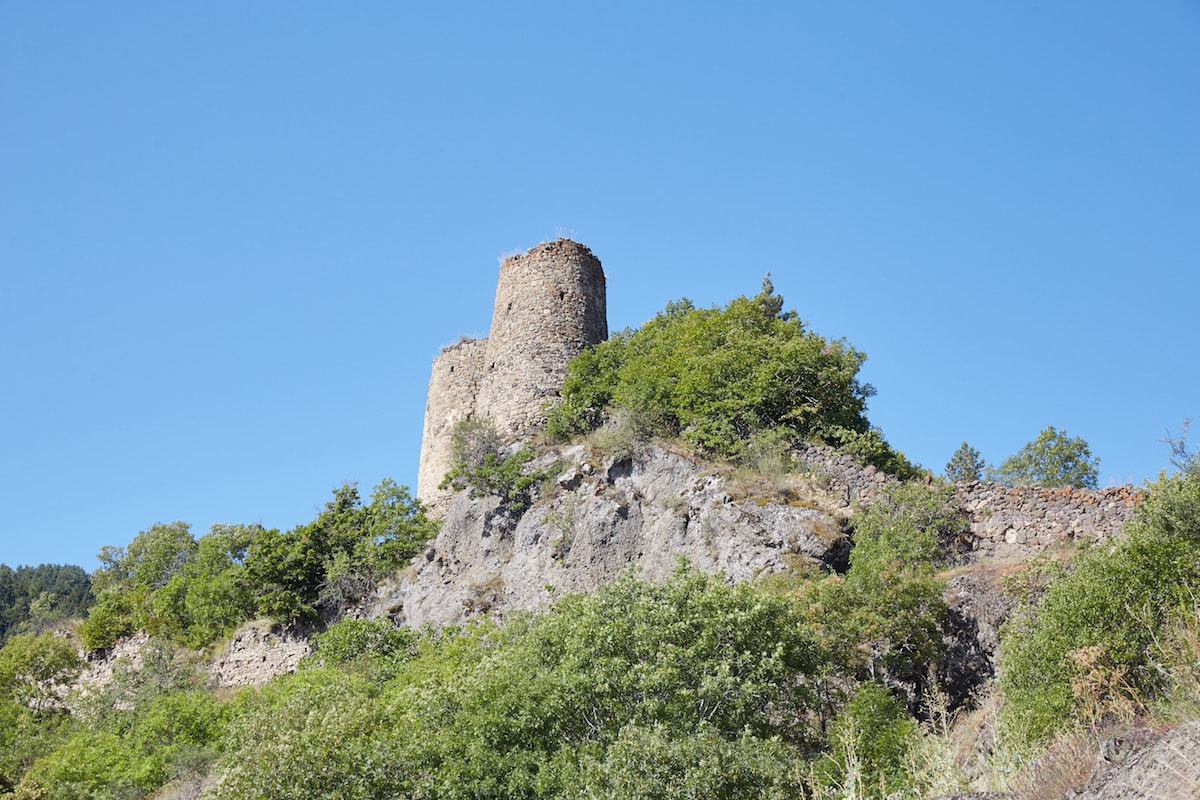
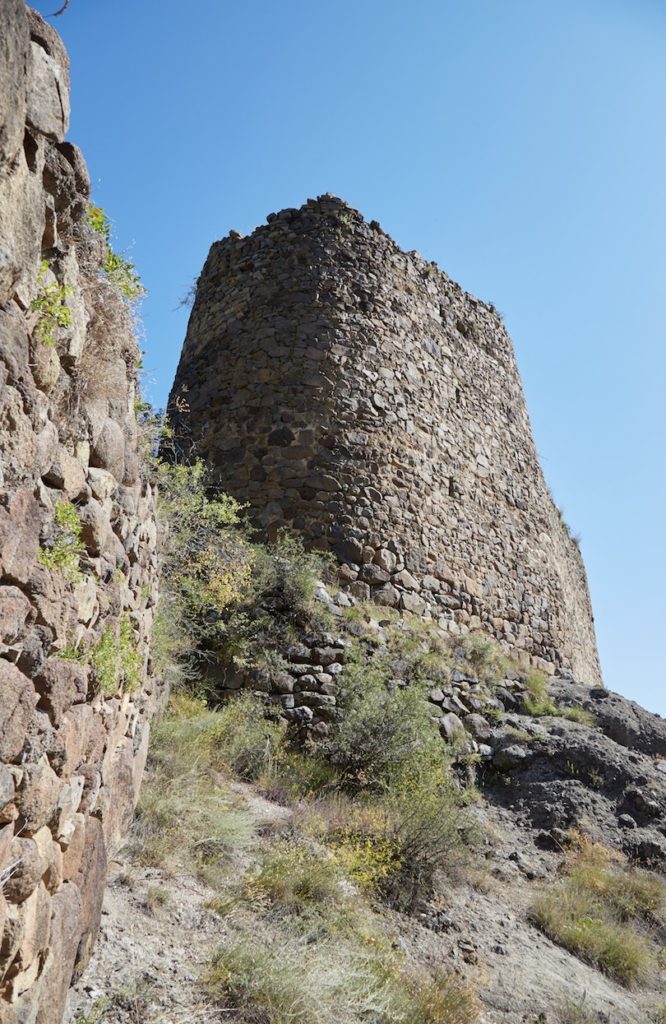
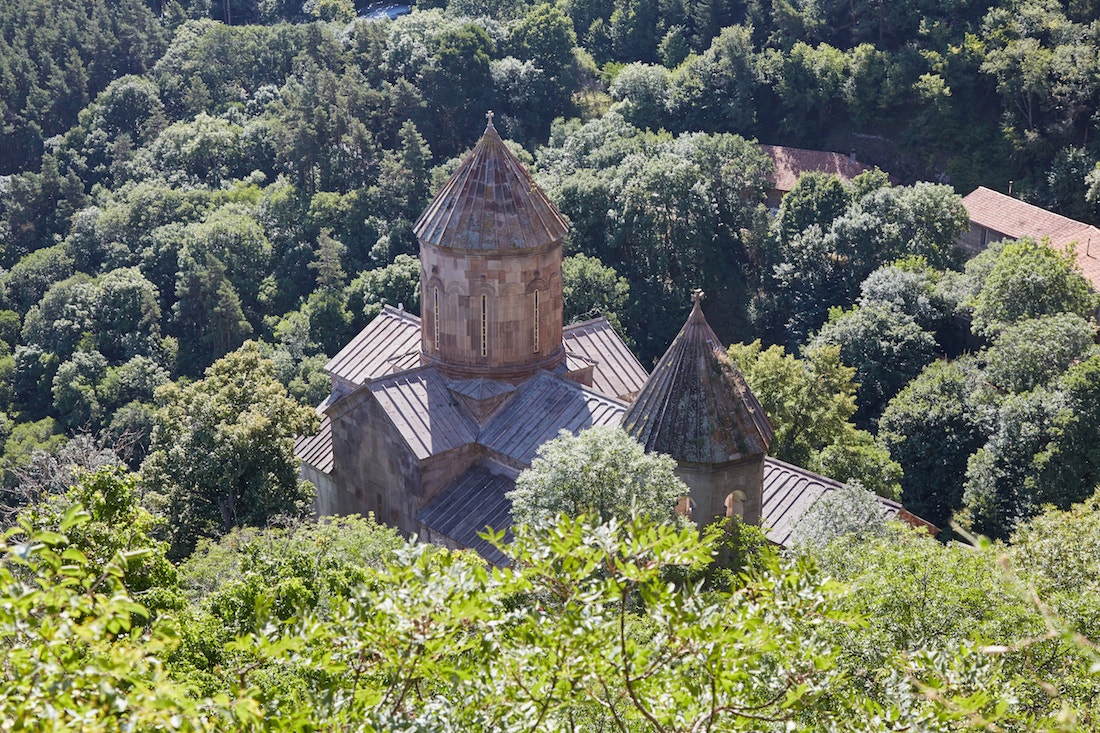
While the tower itself is inaccessible, the hill offers a great view of the monastery and valley down below. Looking down, I noticed numerous other structures that I hadn’t seen before. The whole scene seemed like something out of a fairytale.
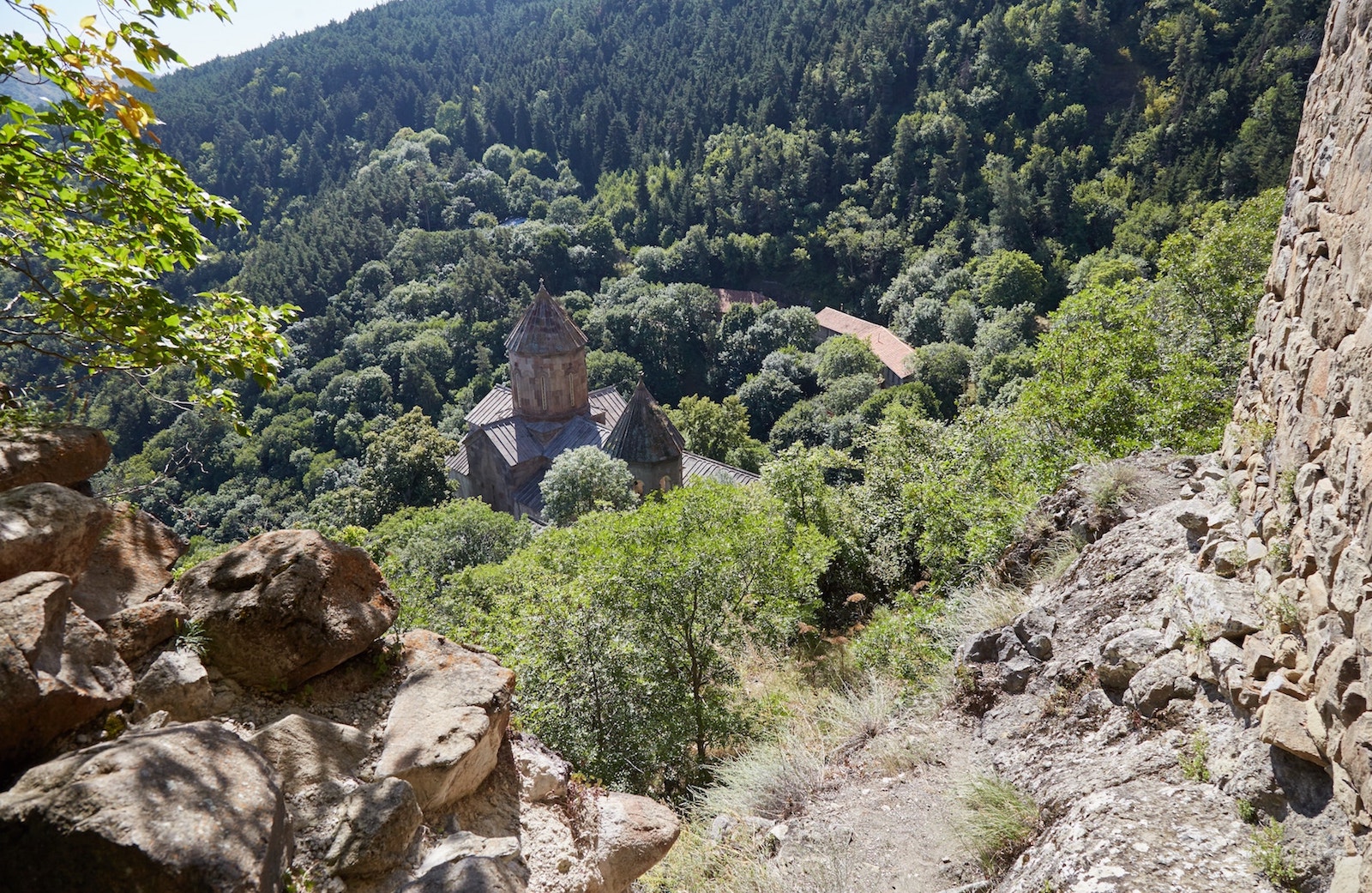
Making my way back to the car, I assumed the day would be almost over after a few brief stops. But as I’d soon find out, it was only just beginning. Fortunately, I’d already checked out of my hotel, and while I planned to catch a bus back to Tbilisi, it didn’t really matter when.


Chulevi Monastery
While I knew we were headed to another monastery, I never would’ve guessed our destination was over 30 km to the west of town. Together with the drive from Sapara Monastery back to the center of Akhaltsikhe, the journey took about an hour in total. The views were excellent for much of the ride, while the drive also provided glimpses of local village life.
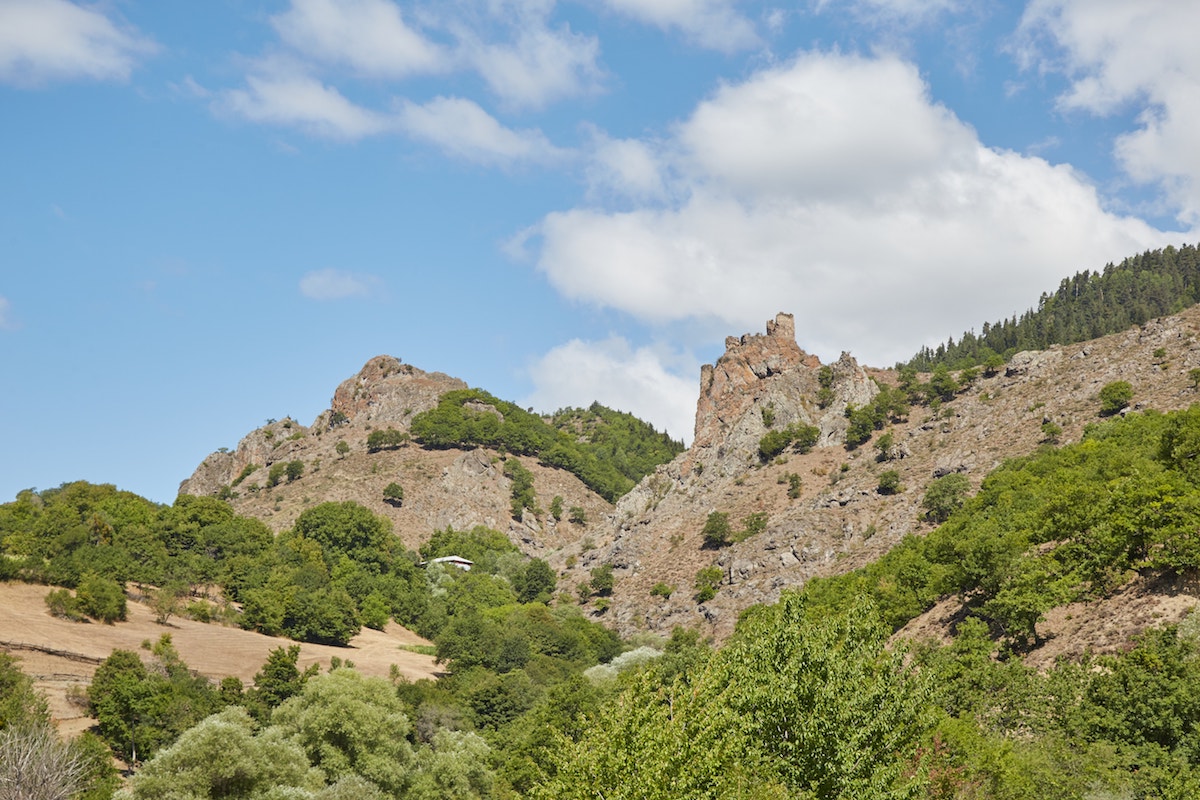
Chulevi Monastery is located just outside of the town of Agideni. The entire area is surrounded by dramatic rocky peaks jutting out from the dense green forest.
The monastery was first established in the 14th century. But unlike Sapara Monastery, Chulevi was discovered by the Ottomans, who completely shut it down by 1595. But thanks to restoration efforts throughout the 20th century, including a recent one in 2003, the small church is in pretty decent shape today.
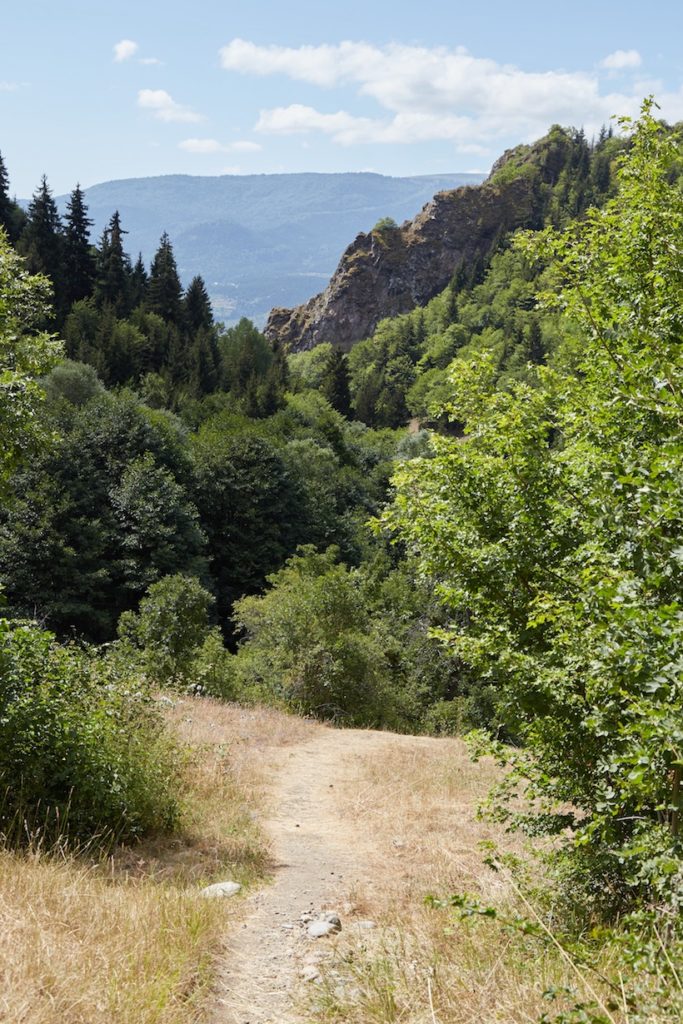
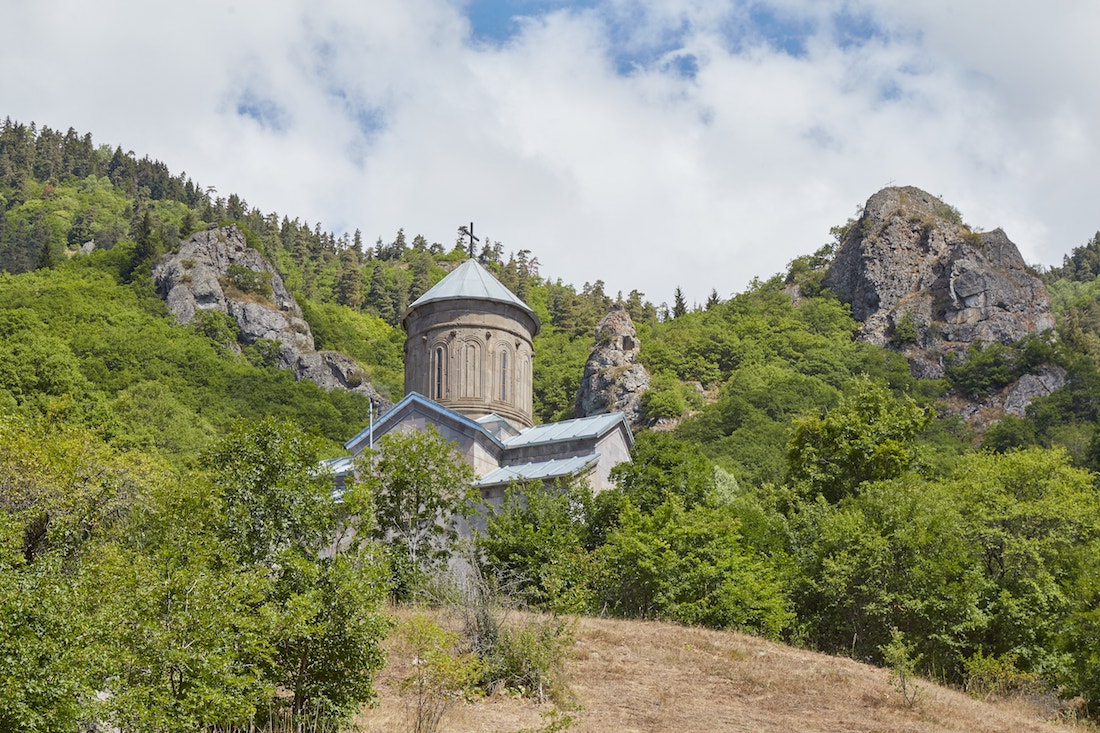
While smaller than Sapara and Zarzma (more below), Chulevi Monastery shares a similar architectural style. The church itself, however, isn’t the only thing visitors come to see. Behind it, secluded in the forest, is a graceful waterfall.
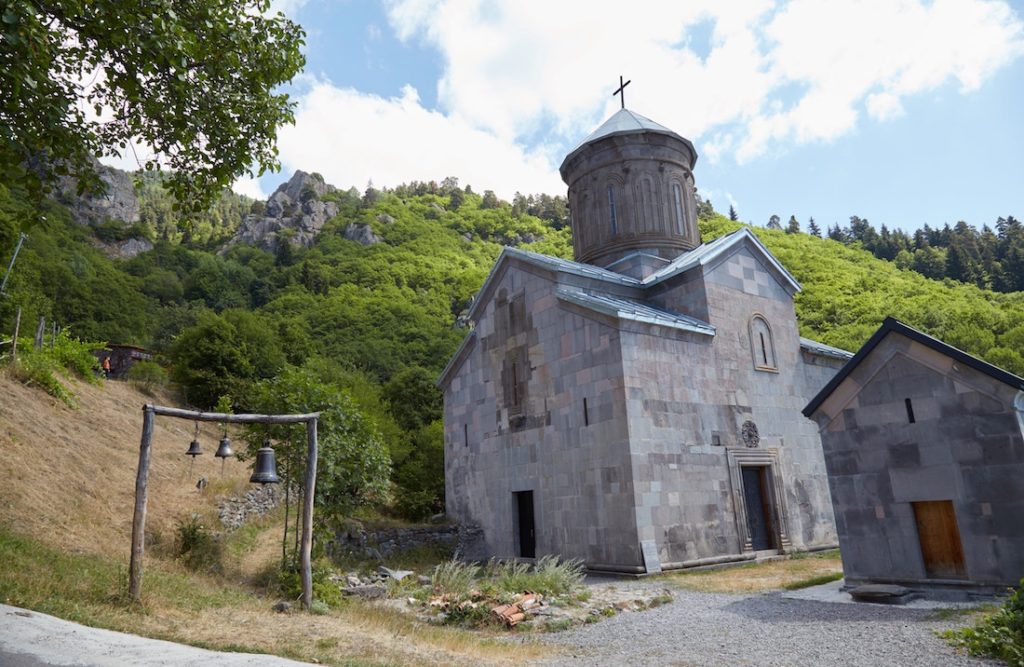

We arrived to find the church locked, and so we headed uphill to get to the forest. Unlike at Sapara, I wasn’t surprised to see that there were no other visitors that day.

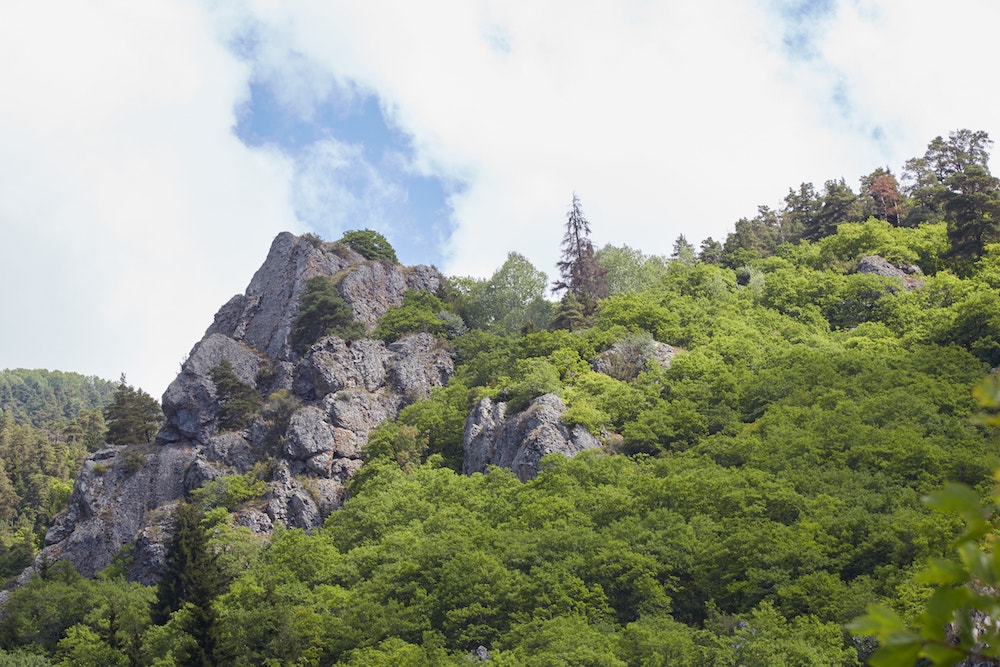
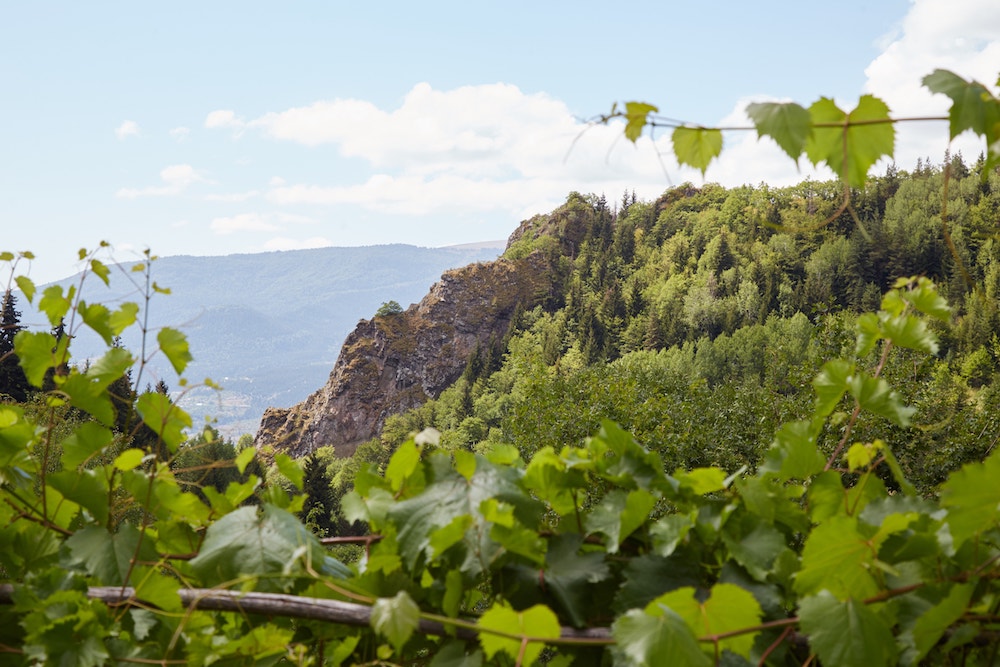
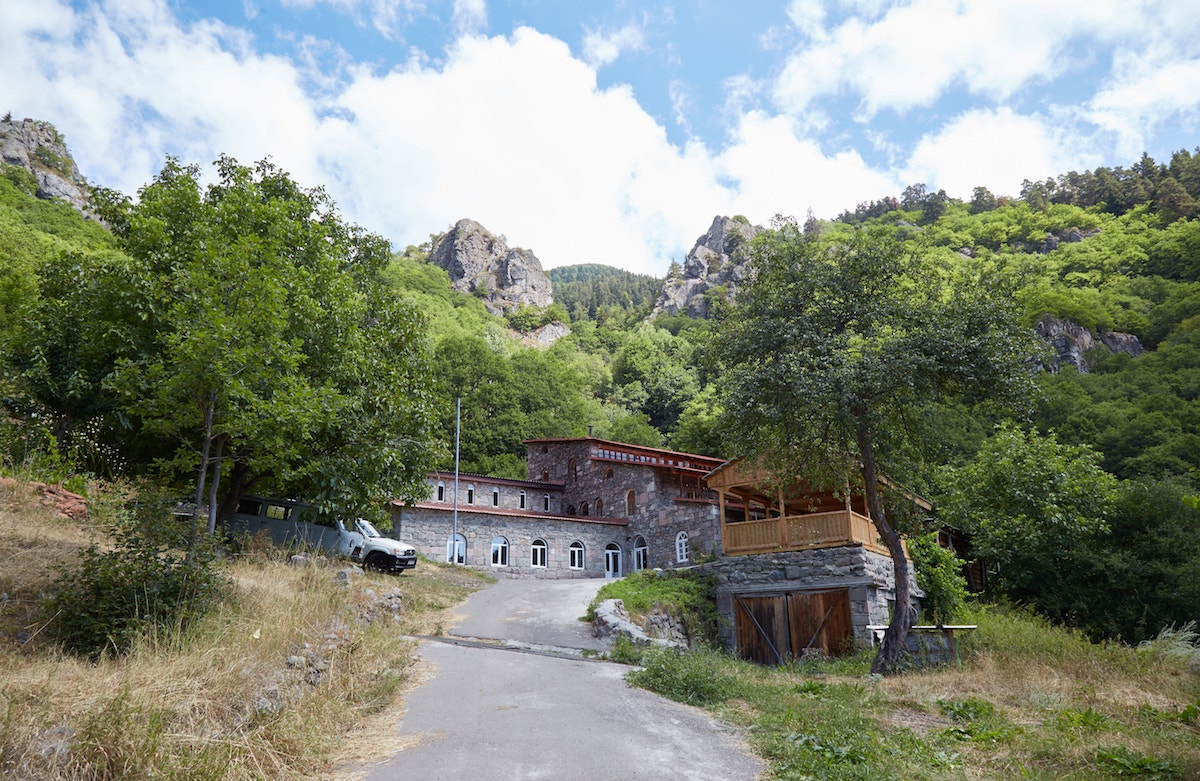
Walking up towards the monk’s living quarters, the tranquility was immediately interrupted by the barking of two massive dogs – one to my left and another to my right. They both started running toward me, and for a second I thought I was done for! But luckily, they were both tied with long leashes to a tree.
The barking caught the attention of the resident monks. Somewhat surprised to see visitors, they greeted us and pointed us in the direction of the trail.

It was a short but steep climb, but the reward absolutely made up for it. The waterfall wasn’t huge, but it was pretty nonetheless. We sat by the falls for awhile in silence, listening to the sounds of the water. The monastery, and any other hint of civilization, was far out of view.
During the Ottoman period, locals hid important items like church bells in these woods. And they weren’t discovered again until the 1980s! Finally, in 1999, they were placed once again in Chulevi’s bell tower.


On our way back down, one of the monks offered to unlock the church for us. The interior was rather humble but the surviving frescoes were excellent. They were painted in 1381 by an artist named Arsen, which we know thanks to an ancient inscription.
And shortly after getting back in the car, Fedia happened to know another fantastic viewing point where we stopped for awhile to take some pictures.



Zarzma Monastery
Our last stop of the day would be Zarzma Monastery, which shares both a similar design and history with the others. Zarzma, about 30 km west of Akhaltsikhe, is located relatively close to Chulevi Monastery. But unlike at Chulevi, we encountered a fair amount of local families who’d come to visit the church.
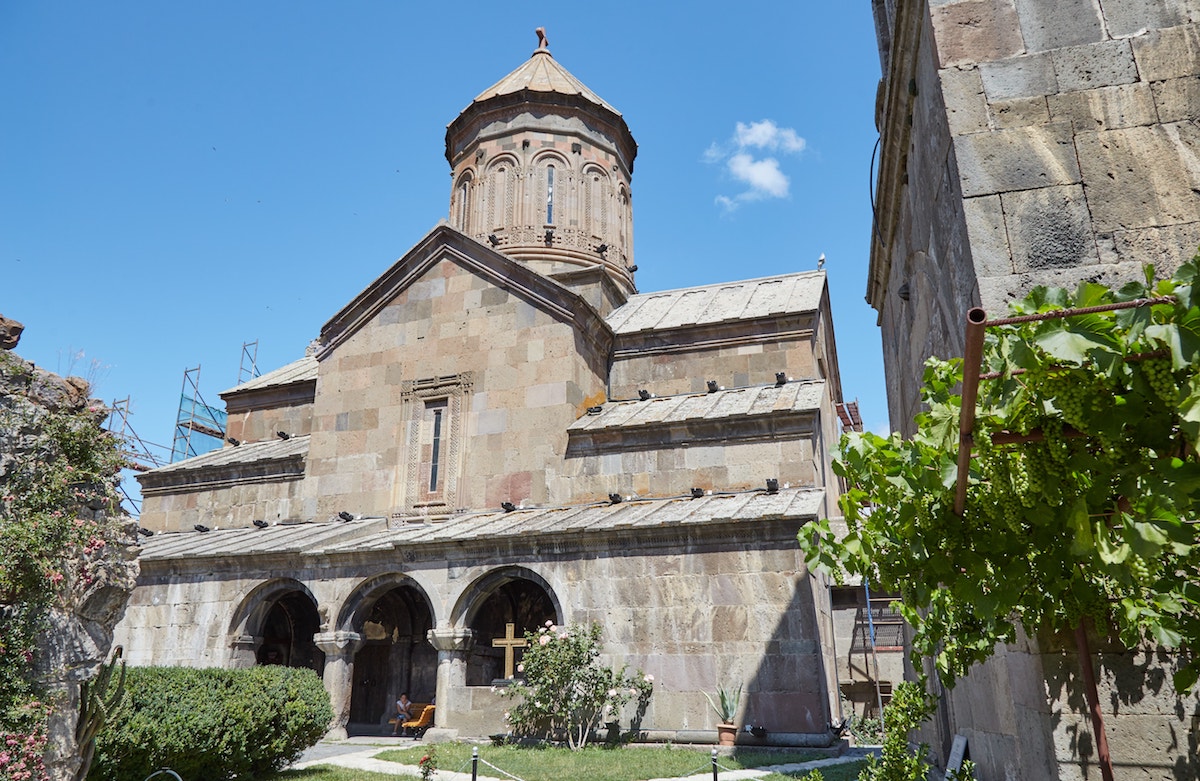


The main structure, the Church of Transfiguration was built in the early 14th century. The site, however, was first established much earlier – possibly as early as the 8th century.
And ruins of older structures can still be seen standing in the courtyard. The bellower, meanwhile, is one of the largest in all of Georgia.
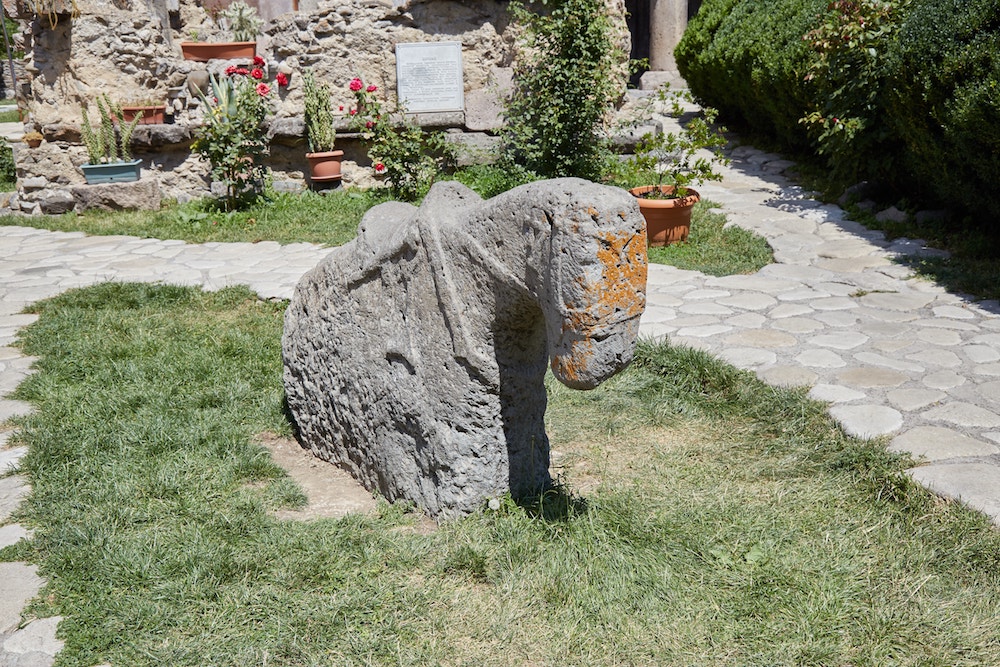
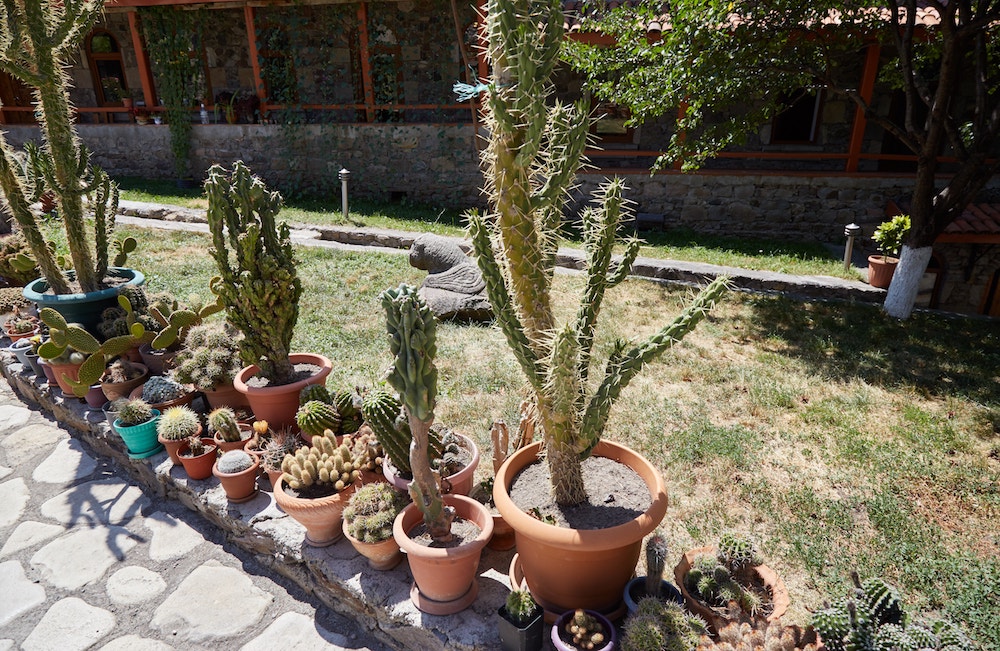

Also around the courtyard are some interesting stone sculptures, a cactus garden and a large dog (fortunately docile and caged).
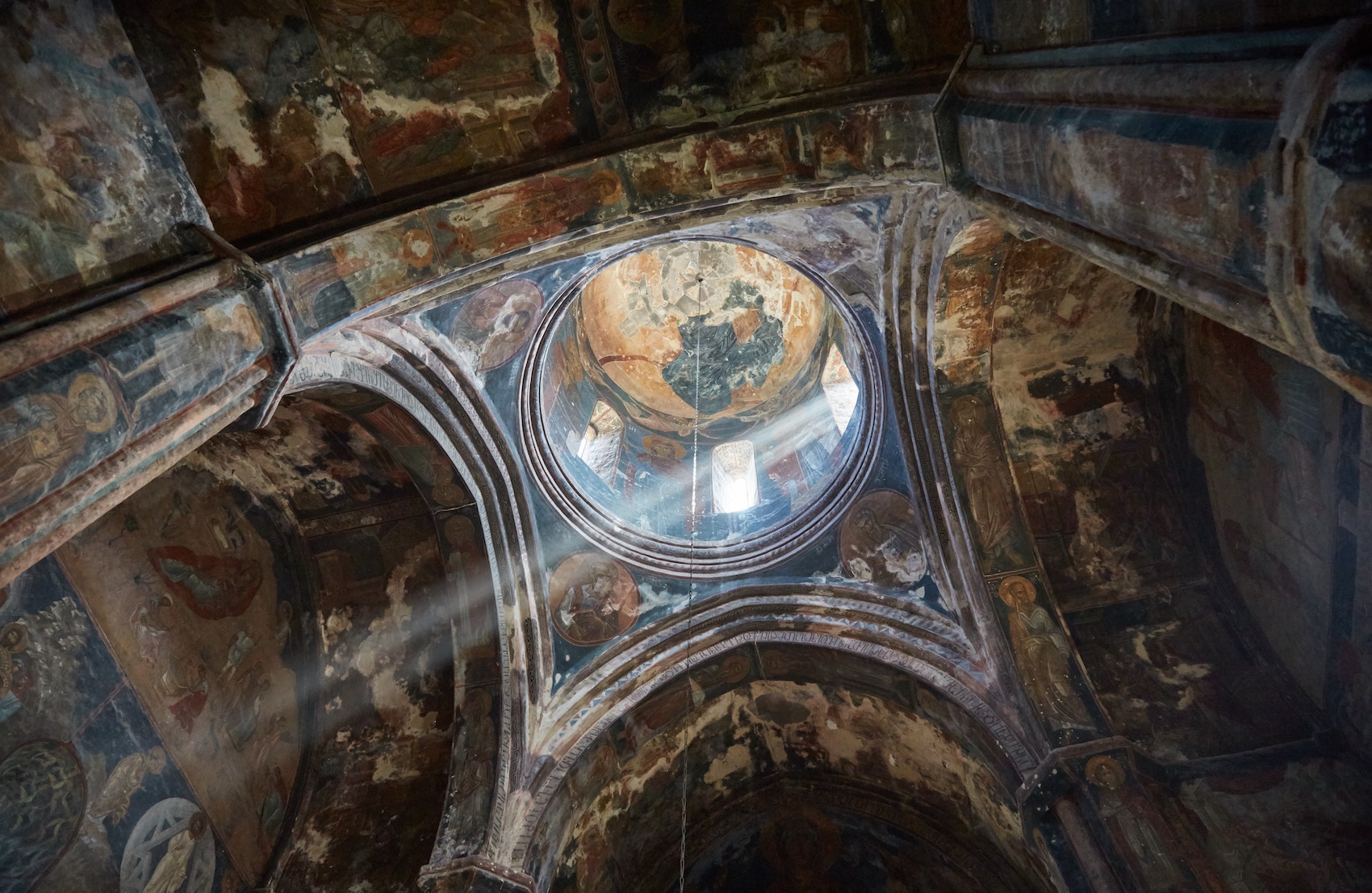
The main church’s beautiful frescoes date back to the 16th century. As is the case with Chulevi Monastery, many of those depicted are members of the Jakel family. They were the former ruling family of the Samtskhe region who inhabited Rabati Castle during their reign.
Inside, I also met a friendly English-speaking monk who gave me some recommendations on other monasteries to visit around Georgia.
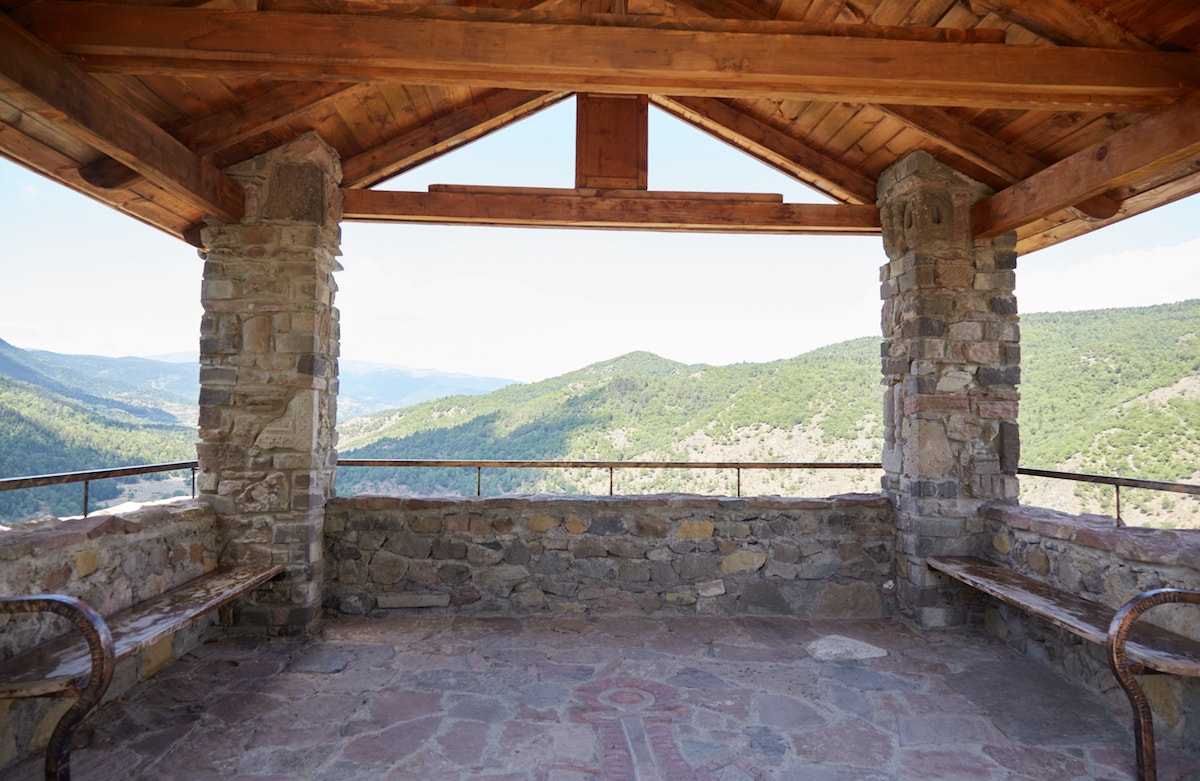
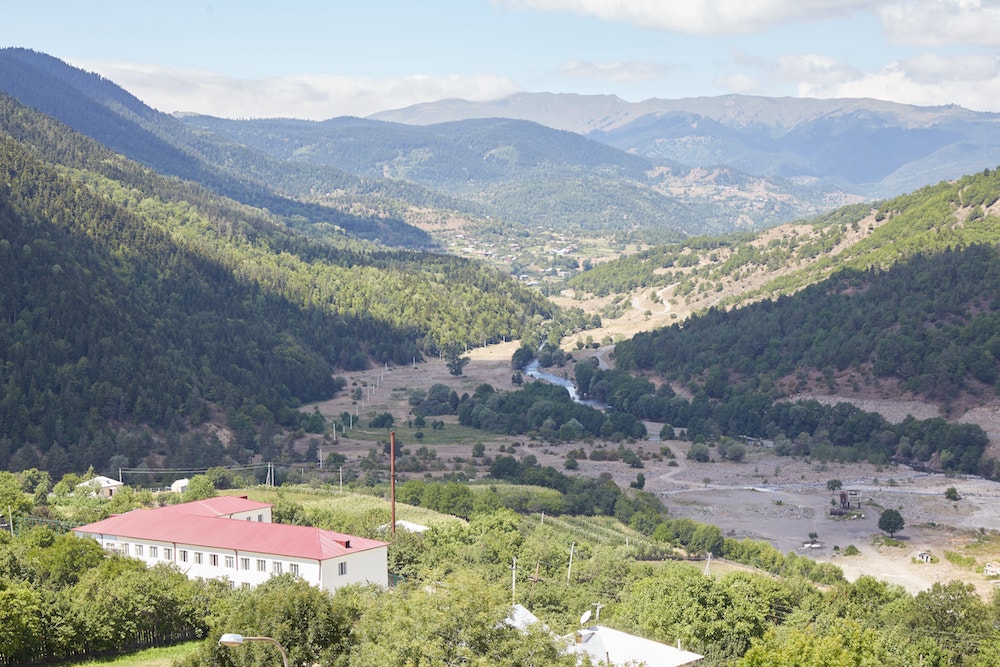

Out back, we found a small pavilion from which to enjoy the scenic surroundings. It was still afternoon, and we were in no hurry, so we sat for awhile and enjoyed the cool breeze.
Whether or not you’re religious, these monasteries are places specifically designed for quiet contemplation in nature- something everyone needs from time to time.
We got back in the car and returned to the city center. And though my driver was hoping I’d extend the excursion even further by making a stop in Borjomi, I felt I’d seen plenty for one day.
Additional Info
While there are some organized day tours which leave from Tbilisi, staying at least a night or two is recommended considering all that there is to see. Luckily, getting to Akhaltsikhe by public transport is simple and easy.
In Tbilisi, take the metro to Didube station and then follow the crowd to the large bus station/outdoor market hybrid. It’s not really a station, however, but just a bunch of vehicles parked within a huge parking lot.
There are marshrutkas (minibuses) for Akhaltsikhe that depart whenever full. While Didube mostly lacks signage, just ask someone where the bus is for Akhaltsikhe (both kh combinations in the name make a gutteral CH sound). If Akhaltsikhe is too hard to pronounce, you can ask about Borjomi, as the same marshrutka stops there along the way.
From Tbilisi, a one-way ride takes 2-3 hours and costs 10 GEL. You can just pay after boarding the bus.
Akhaltsikhe is also reachable by marshrutka from cities like Borjomi and Kutaisi.
Sapara Monastery is one of Akhaltsikhe’s most popular attractions. As no public transport goes there, you’ll need to hire a private driver. The standard rate from the city to Sapara Monastery and back is 20 GEL.
As mentioned, while I knew I’d be visiting a few other monasteries in addition to Sapara, I didn’t know they’d be so far away. That’s why I didn’t bother to discuss the price before our departure, thinking it would just be slightly higher than the standard rate.
It’s worth mentioning that I’d already used Fedia as my driver the previous day to get to Vardzia, and I already felt that he was trustworthy and reliable.
During the long drive to Chulevi, though, I could tell that this was going to be a fairly expensive trip. At the end of the day, Fedia quoted me 60 GEL for the entire journey. This was slightly higher than the standard rate of 50 GEL for Vardzia, Vanis Kvabebi and Khertvisi Fortress.
But all things considered, I think it was a fair price. The time spent in the car was equal to, if not longer than, the trip to Vardzia and surrounding sites. And it was thanks to Fediya that I even learned about Chulevi and Zarzma in the first place. He was also very generous with his supply of chacha (Georgian grape vodka) whether I was in the mood for some or not!
But now that you’ve read this and have a better idea of what to expect, you can maybe try haggling it down to 50 or so before setting out for the day. If you have the time, visiting all three monasteries is really worth the time and effort.
You can reach Fedia at +995-599-438594, but don’t be surprised if he’s the one to find you upon your arrival at the bus station!
Akhaltsikhe is a small city. Staying somewhere relatively central would ensure that you’re within walking distance of both Rabati Castle and the bus station.
Unfortunately, while I only stayed in Akhaltsikhe for two nights, I somehow managed to have two bad experiences in a single weekend.
A week before the trip, I’d booked a hotel right by Rabati Castle on AirBnb. But it wasn’t until I was just stepping out the door on my way to Didube that I got a notification on my phone. Long story short, the hotel overbooked, and they hadn’t bothered to check until that morning. (They were hardly apologetic about it, either.) I then had to scramble to book something at the very last minute.
I sat back down at my computer and came across a hotel near the bus station which seemed to have decent reviews. Upon checking in, the room itself was OK, but the hotel’s Wifi wasn’t working.
When I politely informed the hotel owner of the matter, he became very defensive. “Internet no problem! Phone problem!” he shouted. I dropped the issue, and logged online at a nearby restaurant (clearly, my phone wasn’t the problem). Annoyingly, the hotel Wifi wouldn’t work the entire weekend. And strangely, when it was time to check out, the owner pestered me for a positive review, as if his behavior the first evening had been perfectly acceptable!
While my accommodation experiences in Akhaltsikhe were among my worst in Georgia, I must say that for a country that prides itself on its hospitality, I’ve been less than impressed with the hospitality industry here.
But of course, as mentioned above, I’ve also encountered friendly and helpful people like Fedia.
